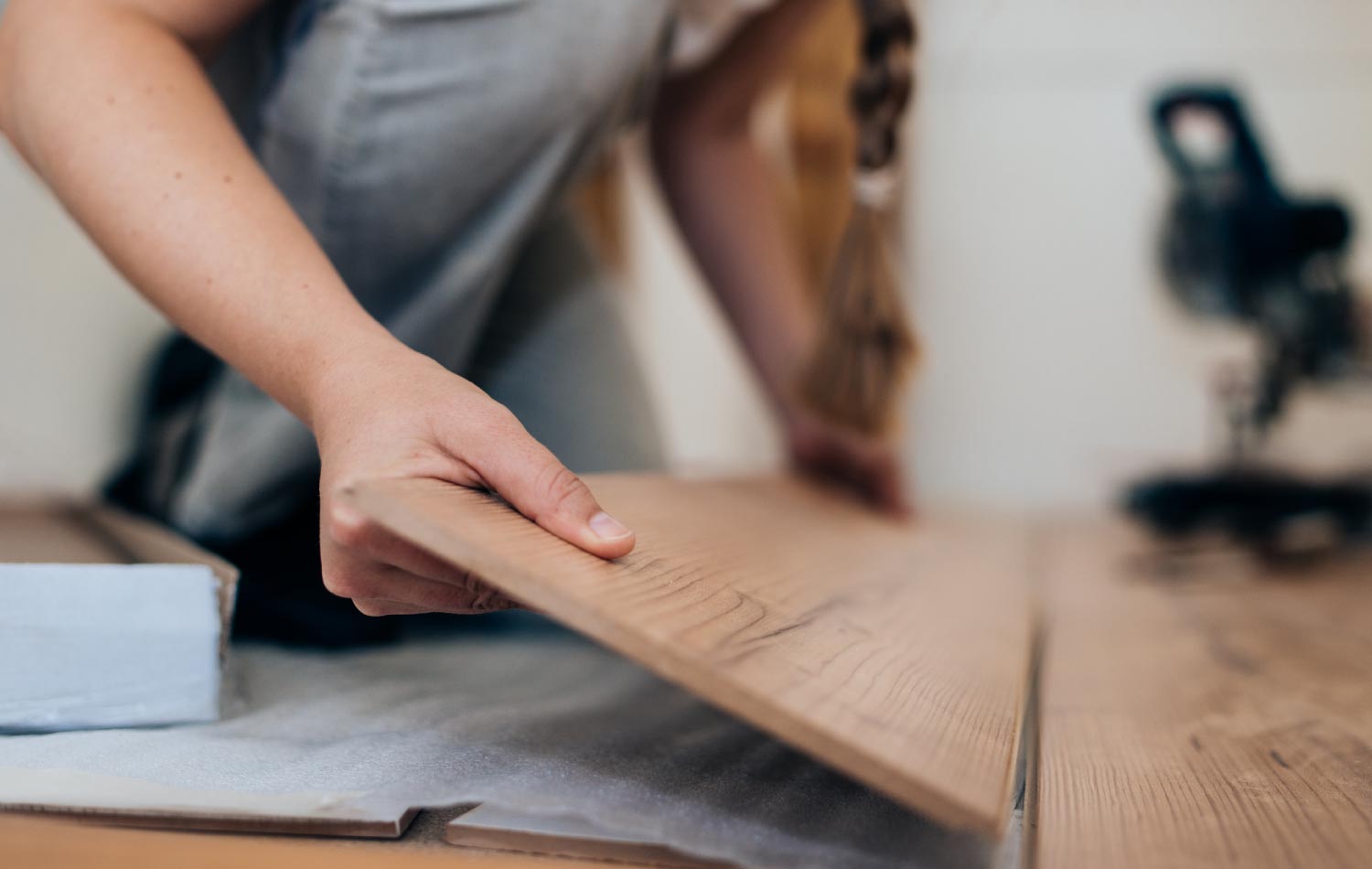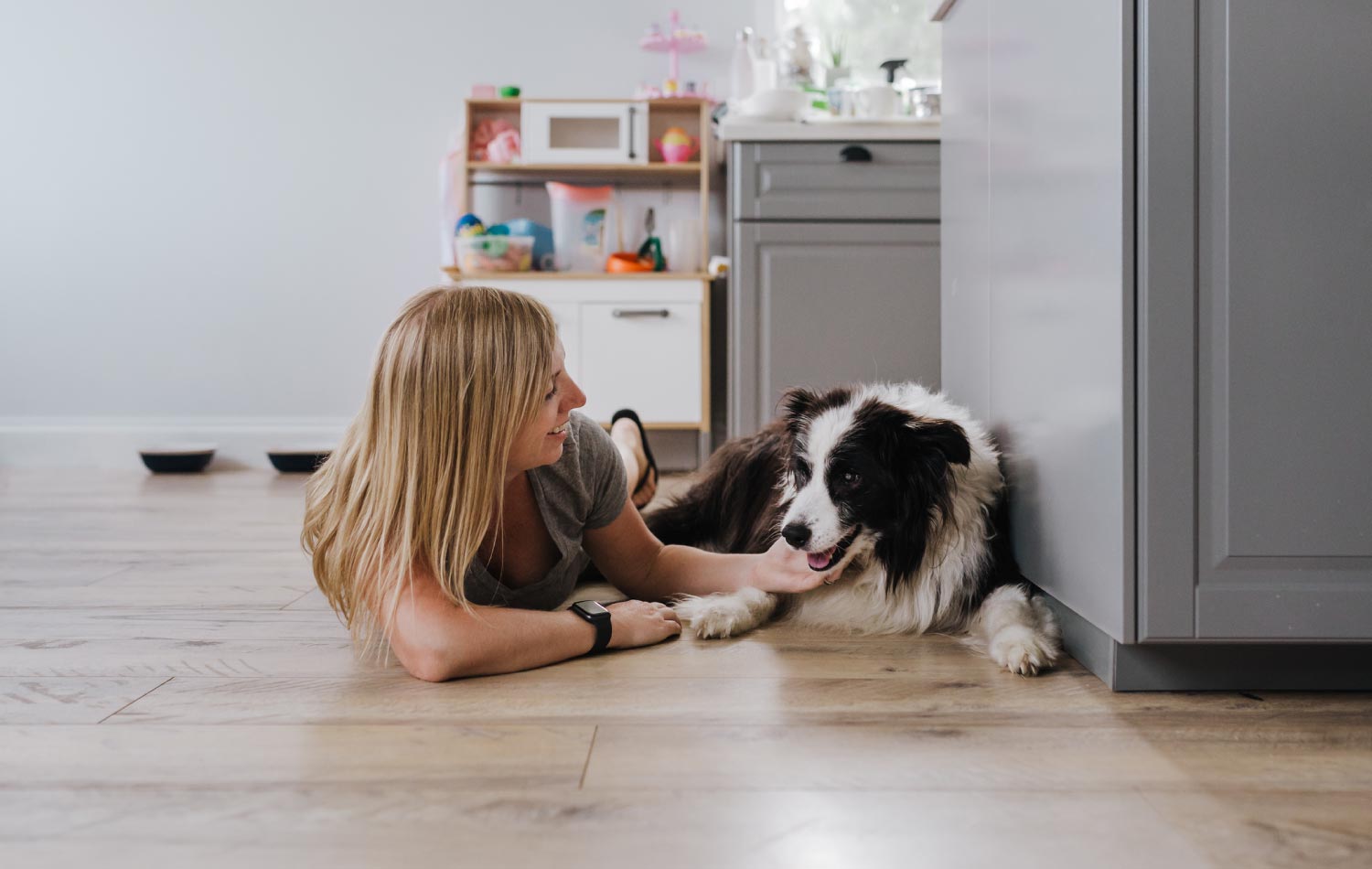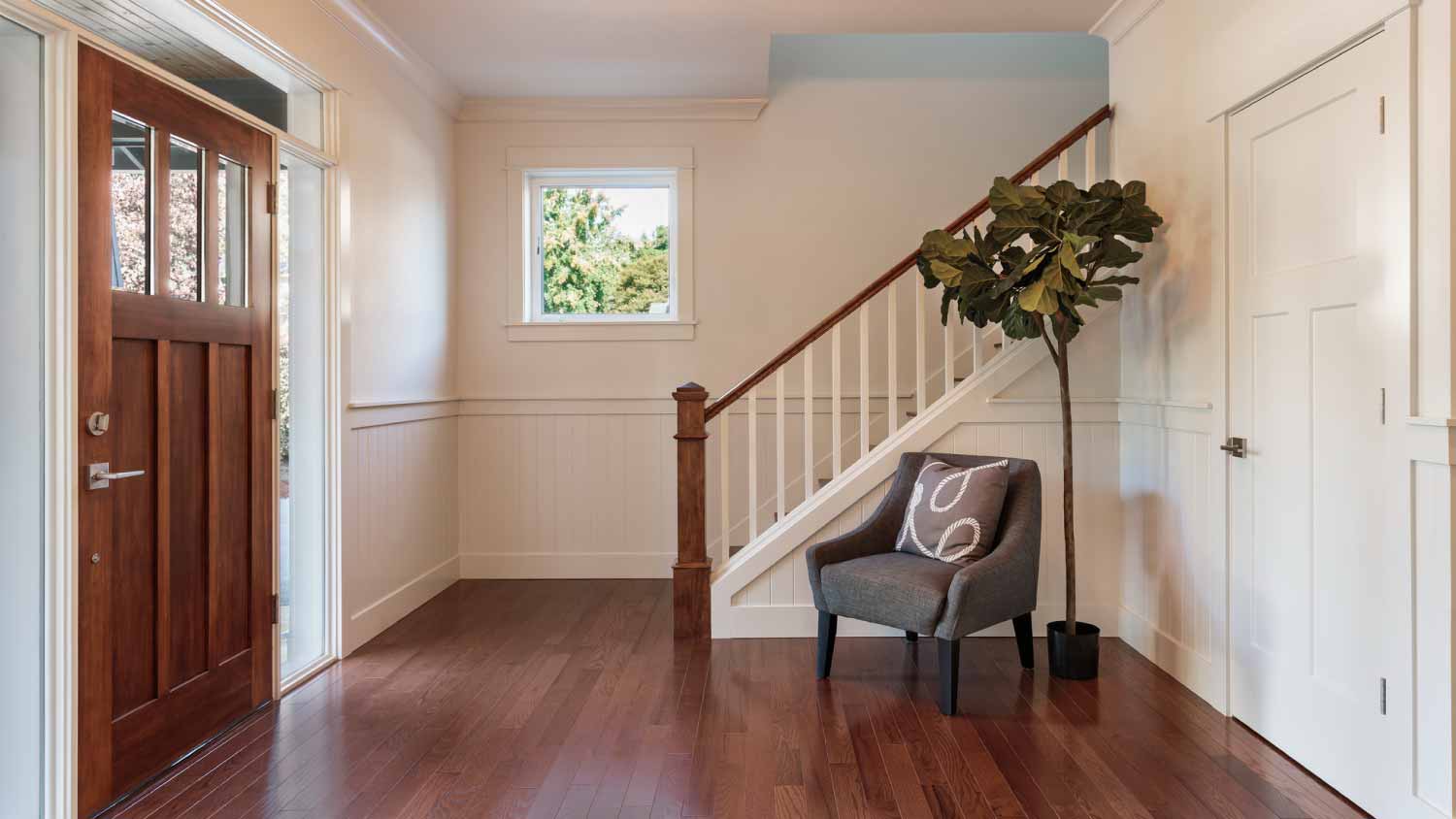
Linoleum is a popular flooring material because it’s one of the most affordable—but linoleum flooring costs vary from project to project. Let’s break it down.
Discover laminate floors with the features needed to perform best in your kitchen


With your busy life, chances are you have leaned into renovation solutions that offer sought-after looks, low maintenance, and great value. Laminate floors fit the bill perfectly, especially in kitchens, where high foot traffic and messy spills are common. Not only does laminate realistically mimic the look and feel of natural hardwood, but it offers built-in resistance to scratches, dents, scuffs, and moisture—all at a fraction of the cost of solid wood planks.
When you are shopping for a kitchen remodel project, you will come across a huge variety of laminate products. The best laminate flooring for kitchens typically has upgraded features. This guide will help you weigh the must-haves.
Most laminate products are considered direct pressure laminate (DPL), a term that describes how each plank or tile is constructed. Four layers of synthetic material are pressed and heated until they bond together, combined in a single step that reduces the cost of manufacturing. This makes DPL more affordable than its counterpart, high pressure laminate.
High pressure laminate is put together in multiple stages and treated with a protective resin before being fused. This higher quality laminate is more rigid than DPL, which is easy to bend. It holds up better to everyday use and resists dents, moisture, and foot traffic.
For that reason, despite a higher upfront cost, high pressure laminate can be a good long-term investment that will not need to be replaced as often.

Laminate floors are installed differently depending on the product. Some laminates are glued down with adhesive along each joint. While this makes for a strong floor, it also takes significantly more time and costs more than other methods. Pre-glued laminate flooring is similar, but with the glue already applied for a faster and more convenient installation.
In the kitchen, however, you are better off with a glueless laminate product. These are tiles or planks that require no glue, nails, or other adhesives. They are very easy to install, even for relatively inexperienced DIYers. The most popular glueless laminate option is the click-lock or tongue-and-groove floor, featuring planks that snap and lock into place at each side and end.
The primary benefit of a click-lock laminate installation in the kitchen is a tight connection between each board. These connections are particularly moisture resistant, which is ideal in both kitchens and bathrooms. Because they are not glued down, floors can be lifted and reinstalled to remove damaged pieces or dry up heavy spills.
You can install a glueless laminate surface as a floating floor, which means it can go over any hard, level surface floor or subfloor with the appropriate underlayment. Some products feature an attached underlayment to help reduce noise levels.

A plank’s edge describes the way the ends of each plank are cut. Common options for laminate include a beveled edge, micro-beveled edge, and square edge.
While a beveled edge is the most common and somewhat easier to install, it also creates a surface full of grooves that are prone to collecting moisture. Properly cared for, this tends not to be a major issue. However, leave a spill sitting for too long, and you may have to deal with the cost of replacement planks.
A square edge, on the other hand, fits together flush on all ends, resulting in a sleek, seamless, and water resistant transition between planks. In a kitchen installation, a square edge can make all the difference when it comes to ease of maintenance.

The wood composite materials used to make laminate floors tend to absorb water and swell. It is possible, however, to purchase water resistant or even fully waterproof laminate. These products are perfect for kitchens where water might splash from sinks, counters, tables, or pet bowls.
While the definition of “waterproof” may vary between manufacturers, a truly waterproof laminate floor will feature a water-repellent surface seal, watertight joints, and a water resistant core. Waterproof performance may depend on proper installation, which you can ensure by hiring a laminate floor installer near you to do the job.
Nevertheless, waterproof laminate is easy to install even as a DIY project like other floating, glueless options. Plus, waterproof floors can be wet-mopped—a boon for potentially greasy kitchen floors—whereas other laminate floors cannot.
Whether you decide to seal grout or install a water-resistant vinyl, waterproofing your flooring is crucial, especially in rooms like bathrooms or the kitchen. A flooring pro can recommend the best materials for specific areas, install new flooring, and ensure it will stand up to water.

If you want a laminate product that will last for many years, make sure to check the abrasion class (AC) rating on the packaging before you buy. It rates laminate flooring on a scale of one to five for how well it holds up to factors like scratches, scuffs, stains, heat, and moisture. Typically, laminate with a higher AC rating features a thicker wear layer.
When choosing a floor for your kitchen, look for a laminate with a rating of AC3 or higher. Lower ratings are better suited to low traffic rooms like bedrooms, home offices, and dining rooms. AC3, AC4, and AC5 all indicate commercial-strength performance that is suitable for any area in the home, including your kitchen.
An AC3-rated floor will be suitable for an active lifestyle or busy family, offering added protection against dropped kitchen items and kids’ toys, sliding chair legs, pet nails, and other causes of dents and scratches that are familiar in kitchens.
There are a few reasons why you would want to install laminate in your kitchen. The benefits include:
Affordability: It is a cost-effective alternative to hardwood with relatively low installation costs because of the ease of installation.
Easy maintenance: Laminate has a smooth top layer that makes it easy to wipe up kitchen spills. Most of the time, you will only need to sweep.
DIY-friendly: Click-lock laminates are simple for handy homeowners to install since you do not need to glue, staple, or nail them to a subfloor. You can even swap out the damaged tiles yourself.
Hardwood look: Compared to other flooring types, laminate flooring has some of the most natural imitation hardwood styles.

Though laminate is a very popular type of flooring, it may not be right for every kitchen. Here are some things to consider before you choose your flooring.
Laminate flooring is often used as an alternative to hardwood because it has a similar look at a fraction of the cost. Most homeowners pay $1,500 to $4,650 for laminate floor installation. Meanwhile, the typical cost of hardwood flooring is between $2,500 and $7,050.
Despite the relatively low price tag, it is not the most affordable flooring on the market. Both vinyl and linoleum flooring can cost less, depending on the quality. Consider your budget before choosing a type of flooring.
Laminate flooring is highly durable. It generally lasts 10 to 30 years with proper maintenance, but it is vulnerable to scratches from moving furniture or pet claws. Scratches can make the surface even more vulnerable to water, but damaged laminate cannot be refinished like hardwood. Instead, you will need to replace the planks.
Make sure you choose a laminate with a durability rating that can hold up to your family’s lifestyle. High traffic, pets, and kids all require increased durability.
To maintain laminate floors, you will need to clean them with a damp—not soaking wet—mop and a manufacturer-recommended cleanser that does not require added water. To avoid damage to the protective coating, do not use spray mops, steam cleaners, or acidic cleaners like ammonia or vinegar. Always mop up spills immediately to prevent water damage.
If you are installing laminate in your kitchen, you may want to opt for a variety with increased water resistance or waterproofing. Laminate is very vulnerable to water damage. It can seep through the seams and into scratches, causing the boards to swell, bubble, peel, and warp. Floating laminate has a space between the laminate and the subfloor which can harbor mold if exposed to excess moisture.
Different brands of laminate come with different warranties. These plans last anywhere from five years to a lifetime, and can cover everything from manufacturer defects to water resistance to joint integrity. They typically do not cover things like scratching, water damage, or poor installation. Always check the warranty before buying.
Some homeowners are concerned about the potential health impact of laminate flooring. In 2016, the CDC found that some laminate originating in China contained high levels of formaldehyde. If you are concerned about volatile organic compounds (VOCs) off-gassing in your home, search for laminate flooring with GREENGUARD certification, ultra-low emitting formaldehyde features, and labels touting “no added urea-formaldehyde.” To reduce formaldehyde exposure, make sure to air out your laminate and mask up during installation.
From average costs to expert advice, get all the answers you need to get your job done.

Linoleum is a popular flooring material because it’s one of the most affordable—but linoleum flooring costs vary from project to project. Let’s break it down.

If your laminate is damaged, it’s time for repairs or replacement. This guide will show you everything you need to know about laminate floor repair costs.

Staining concrete floors can add a little something to a drab slab. Learn more about how much stained concrete floors cost and what factors impact it.

An uneven floor can be dangerous as well as annoying. Find the answer to the question “why is my floor uneven” and the solution in this helpful guide.

From hardwood to laminate—there are many types of flooring you can put in your home. The best choice is a perfect balance of aesthetic, durability, and price.

You can avoid buckling, gapping, and regret. Discover the most common vinyl plank flooring installation mistakes and how to dodge them like a pro.